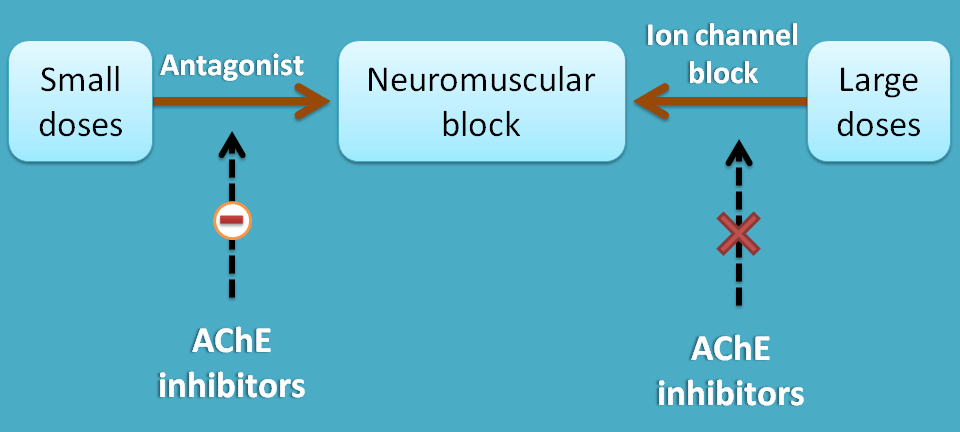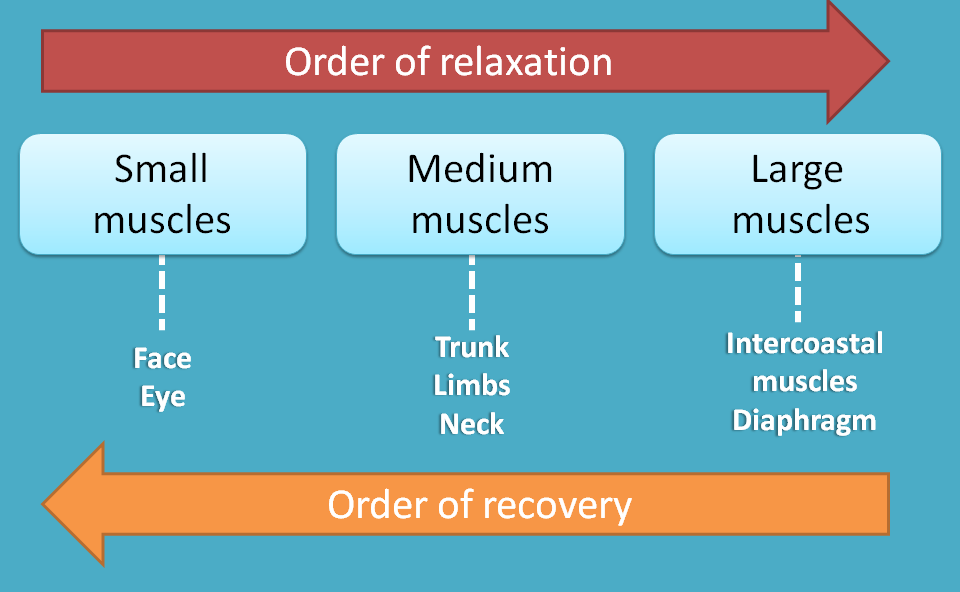Actions and uses
How they act?
These drugs competitively bind to the nicotinic acetylcholine receptor and prevent the binding of acetylcholine thereby inhibit its response. This results in relaxation of the skeletal muscle.

As discussed earlier, their block is competitive and can be reversed by cholinesterase inhibitors. But at higher dose these drug lose their competitive block as they directly inhibit sodium channel blocking depolarisation. At this stage acetylcholinesterase inhibitors can't reverse the block as acetylcholine is not able to produce contraction due to ion channel block./p> 
Actions
The main action of these agents is to produce skeletal muscle relaxation with smaller muscle groups affected first and larger one at the last. Small muscle like face and eye are affected first followed by medium sized muscle groups like neck, limbs and trunk. Large muscle groups like intercostal muscle and diaphragm are lastly effected. The order of relaxation also follows the same order by reverse direction. So, diaphragm is first recovered with facial and ocular muscles recovered at last.

What to be checked before administration?
Before administering drug, the following drug interactions should be checked.
Interactions increasing block
Calcium channel blockers
As calcium is required for contraction, calcium channel blockers decrease calcium availability and increase the block of neuromuscular blockers.
Halothane
Halothane increases sensitization of heart and skeletal muscle therefore increases neuromuscular block.
Aminoglycosides
Aminoglycoside antibiotics decrease calcium mediated exocytosis thereby decrease acetylcholine levels at neuromuscular junction and thereby increase neuromuscular block.
Interactions decreasing block
As we have discussed above acetylcholinesterase inhibitors decrease the block at low doses of non-depolarising neuromuscular blockers
Side effects
At therapeutic doses, many of these drugs are safe and few drugs are associated with specific side effects. Two important sets of side effects that are clinically significant include
- Hypotension, wheezing and bronchoconstriction
- d-Tubocurarine
- Atracurium
- Mivacurium
- Tachycardia
- Gallamine, pancuronium
First set of side effects are shown by d-tubocurarine are due to ganglionic block and release of histamine from mast cells. On the other hand, atracurium and cisatracurium are converted in to therim metabolite laudanosine which increases histamine release from mast cells leading to hypotension, wheezing and bronchoconstriction.

Pancuronium shows vagolytic effects decreasing parasympathetic control on the heart. This results in increase in heart rate leading to tachycardia. On the other hand, gallamine directly blocks M2 receptors resulting in tachycardia.
Indications
These drugs are mainly used as skeletal muscle relaxants during surgery for
- Endotracheal intubation
- Mechanical ventilation